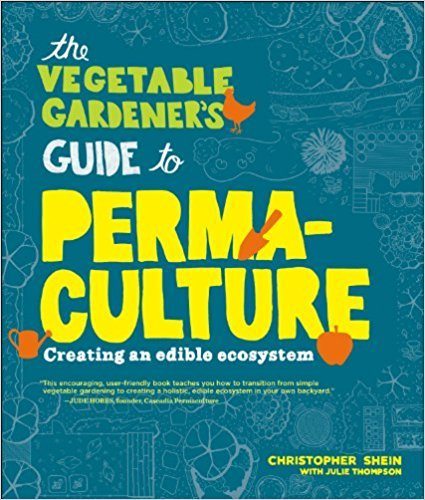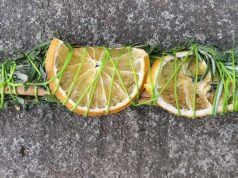BY: TIM O’NEAL
Organic food and farming have seen a huge increase over the past ten years, and for good reason. Farming and gardening techniques that use fewer harmful, synthetic fertilizers and pesticides are better for the environment and better for human health. Permaculture methods of growing food reach far beyond these benefits. Growing food organically is just the starting point.

According to a report from 2014 by Stephen Daniells titled US organic food market to grow 14% from 2013-18, 81% of American families reported buying organic food at least sometimes. For many people, the barriers to buying organic food are accessibility and cost. Growing organic produce at home overcomes both of those issues. Permaculture practices are a great way to achieve the best results.
What is Permaculture
Permaculture (permanent + agriculture) was developed in the late 1970s by Bill Mollison and David Holmgren. It’s a set of principles and techniques for food production at any scale that focuses on mimicking natural systems, instead of competing against them. It puts humans into the system as engaged participants, departing from the conventional agricultural approach of conquering nature. The principles can be applied to container gardens on apartment balconies, large scale agricultural operations, and anything in between.
Practitioners of permaculture believe that it is more than a set of gardening techniques. It is the simplest and most direct way we can repair many of the global problems we face today – environmental destruction, poverty and food scarcity, water shortages, among others.
Co-founder, Bill Mollison, says, ““The greatest change we need to make is from consumption to production, even if on a small scale, in our own gardens. If only 10% of us do this, there is enough for everyone. Hence the futility of revolutionaries who have no gardens, who depend on the very system they attack, and who produce words and bullets, not food and shelter.”

From Permaculture: A Designer’s Manual, there are three core tenets:
Care for the earth: Provision for all life systems to continue and multiply. This is the first principle, because without a healthy earth, humans cannot flourish.
Care for the people: Provision for people to access those resources necessary for their existence.
Return of surplus: Reinvesting surpluses back into the system to provide for the first two ethics. This includes returning waste back into the system to recycle into usefulness. The third ethic is sometimes referred to as Fair Share to reflect that each of us should take no more than what we need before we reinvest the surplus.
As stated in the third tenet, one central element of permaculture is to return waste back into the system as a benefit. The most direct way to do this is to compost garden and food waste onsite to add nutrients and organic material to the soil. If done well, this can eliminate the need for fertilizers.
There is also a strong emphasis on providing habitat for pollinators, other beneficial insects, and birds. The idea is to mimic a forest setting, or some other mature ecosystem, where pests and diseases are kept in balance by a harmonious relationship among organisms up and down the food chain. With this approach, there’s no need for chemical pest control.

Permaculture concepts can be applied beyond a single garden or farm to include a neighborhood, village, or an entire city. A permaculture system is designed for resiliency. This means that if one element fails the rest of the parts can fill in to keep the overall system intact. A society designed around permaculture principles is built to withstand destructive forces.
While it is a relatively new approach to food production, permaculture relies on concepts from traditional approaches to agriculture. There are methods from all over the world that have been highly productive and sustainable over long periods of time. The revolution of industrial agriculture has worked to eliminate many of these techniques. Permaculture incorporates them back into the modern system to ensure resiliency.
Achieving a productive garden using organic practices is an important goal, for the health of both humans and the environment. Permaculture provides a tested, ethical method for achieving that goal. It also assures us that the benefits of growing healthy food for ourselves isn’t limited to the space of our gardens.
As Bill Mollison says, “If we do not get our cities, homes, and gardens in order, so that they feed and shelter us, we must lay waste to all other natural systems. Thus, truly responsible conservationists have gardens.”
For a great introduction to some permaculture ideas, check out this video by Toby Hemenway.




Organic permaculture project is best food security and sustainability. For future life’s. Please we like to develop organic permaculture project we need a help Thanks your sincerely Khamish
[…] first heard the term permaculture about five years ago from my friend John, after I mentioned to him that I was interested in […]
[…] READ THE FULL STORY AT https://thehomestead.guru/permaculture/?fbclid=IwAR2uez2yUOTZ4_KM8Yttd92ZXYK6rCKTNAUUUnmHn33hPA3h7YL… […]
[…] READ THE FULL STORY AT https://thehomestead.guru/permaculture/?fbclid=IwAR2uez2yUOTZ4_KM8Yttd92ZXYK6rCKTNAUUUnmHn33hPA3h7YL… […]
Hi! Thank you for you interesting blog 🙂
Could we use the delightful permaculture_design illustration to explain better the concept of permaculture to the visitors in the permaculture system we created in Montreal?
It would be awesome!
Thank you and have a good day 🙂
Joelle
I do try to use only unlicensed images found via google search with the option clicked that its OK to use, but I am not able to give permission so to speak!
[…] Permaculture Puts Organic Gardening on Autopilot(Opens in a new browser tab) […]